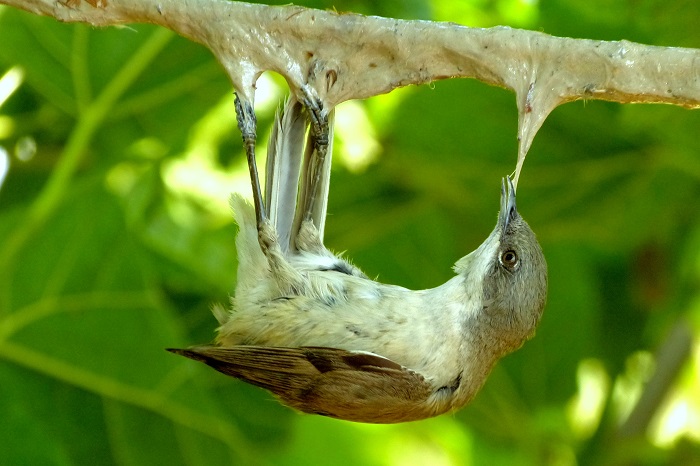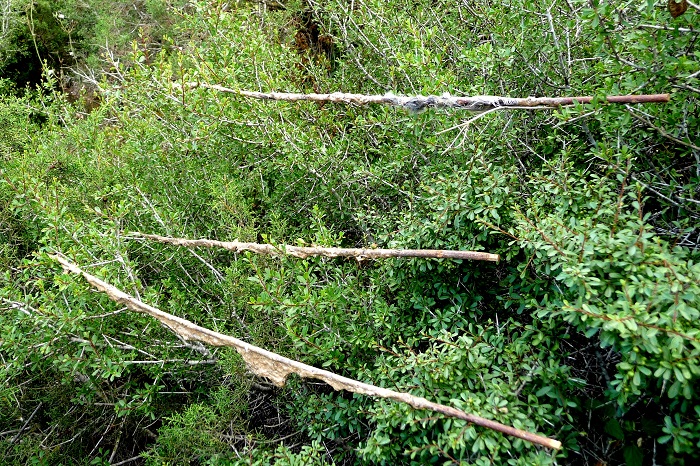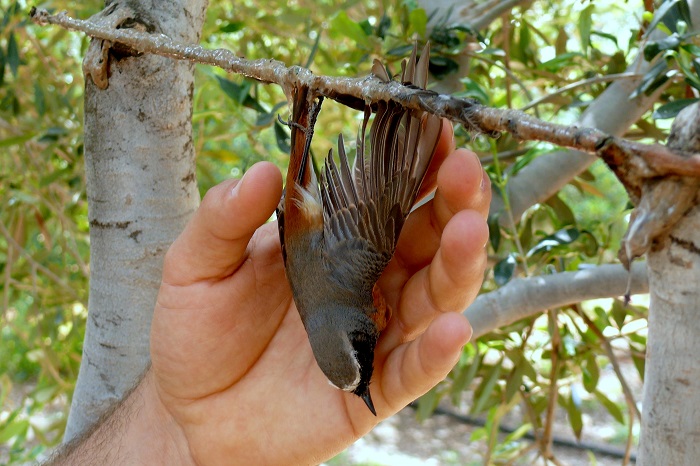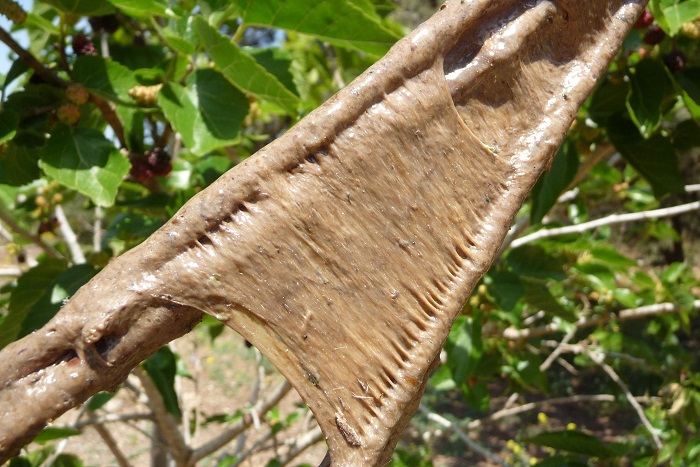Songbird trapping with limesticks in Cyprus

In the past, 'limesticks' were used throughout Europe to catch wild birds. Today they can only be found in a few regions, especially in Eastern Spain, French Provence, Lebanon and Cyprus. While using glue to trap songbirds has become rare almost everywhere, despite now being illegal everywhere, it remains the most common and widespread trapping method in Cyprus.
Plum juice glue
The glue used in Cyprus is made from the berries of the Syrian plum tree. Olive branches are cut into 80cm long rods and coated with thickened plum juice. They are placed in trees and bushes, which are often cut to size and are often fitted with ladders so that the trappers can also reach the tops. Trapping trees are mostly mulberry trees, Japanese medlars, mastic shrubs, junipers or olive trees.

The horizontally placed "branches" give the impression of a suitable perch for tired migrating birds to rest upon. They are attracted to the traps and as they land their feet become immediately stuck. Once caught, they tip head over heels and become increasingly entangled as the birds panic and attempt to free themselves. Within minutes their wings, tail and beak are also firmly stuck to the glue. They usually die after several hours and remain 'fresh' in the warm climate for a long time. The birds are typically killed by trapper when they attend the traps once or twice a day before dying of stress and/or exhaustion.
Limestick trapping predominantly occurs in gardens, that are often are well fenced in. Migratory bird trapping in open landscape - e.g. the Macchia near the coast or on brownfields - has become increasingly rare as a direct result of our operations. The use of electronic decoys and lures is also widespread. They are mounted directly next to the traps and lure the migrating birds to their deaths with nocturnal blackcap songs.
60 bird species die on the limesticks

Blackcaps are the primary species sought after for the popular Cypriot delicacy known as "Ambelopoulia". But of course, limesticks indiscriminately catch anything and everything that settle on them. All insectivores and songbirds end up in the pot: In addition to blackcaps, the most common victims are garden warblers and lesser white-throats, wood warblers, redstarts, pied and collared flycatchers, nightingales and robins. Also bee-eaters (some of which are caught quite deliberately), owls, orioles, ortolan bunting also end up on the limesticks, as do endemic species such as the Cyprus warbler. In total, CABS activists have found more than 60 bird species on limesticks, more than half of them threatened throughout Europe. Bird trappers in Cyprus are thus causing far greater damage than most of their fellow kind in France, Spain or Italy.
There are two trapping seasons: In the spring, the limesticks are out from March to May, in the autumn from September to November. Due to our bird protection camps, where we collect thousands of limesticks each year, the trapping times have shortened - most limesticks can only be found during the peak migration period in April and September. While the traps used to be set for several weeks, poachers now usually only lay them out on really good migration days. This alone saves tens of thousands of birds.
Limestick versus trapping nets

Authorities and politicians in Cyprus have long tried to dismiss bird-trapping with limesticks as a harmless tradition. They argue that the nets that are also used in Cyprus catch far more birds. In fact, they are not entirely wrong: most professional poachers use nets almost exclusively because they are a more effective method of trapping. Limesticks, on the other hand, are used more by the individual traditionalists, who catch mainly for their own needs.
But if you play down the damage caused by limesticks, you probably have more votes than the truth in mind: Because there are far more bird trappers who use limesticks than poacher gangs with nets. The number of birds dying on limesticks is therefore much higher. Ultimately, it would be more productive for the birds to take more vigorous action against the numerous traditionalists than against the handful of professional poachers.






